Supply and demand: Chefs making their mark from farm to fork
BEHIND every great chef is a brilliant producer. We meet three Victorian chefs and the local growers who keep them stocked with outstanding ingredients.
VIC News
Don't miss out on the headlines from VIC News. Followed categories will be added to My News.
BEHIND every great chef is a brilliant producer. We meet three Victorian chefs — ahead of their events at next month’s Melbourne Food and Wine Festival — and the local growers who keep them in outstanding ingredients
PHIL WOOD & RYAN SHARPLEY
WHEN Phil Wood moved from Sydney to the Mornington Peninsula last year, he spent his first weeks like any other foodie visiting the region — checking out farmers’ markets, farm gates and local producers with recipes in mind.
After eight years as Neil Perry’s right-hand man at Rockpool and Eleven Bridge, the New Zealand-born chef was wooed to property magnate John Gandel’s $50 million art, wine and restaurant development at Point Leo.
WHERE TO FIND COUNTRY VICTORIA’S BEST RESTAURANTS
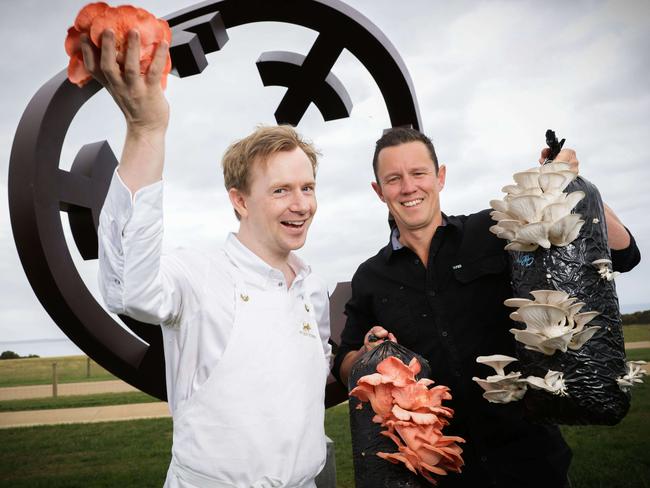
As Pt Leo Estate’s culinary director, Wood heads the 100-seat bistro, with fine diner Laura — named after a prominent sculpture, one of 50 on the 134ha site — to open next month.
What the chef loves most about his sea change is the ability to be truly farm-to-table, to take food from the ground in the morning and plate it that night.
“Coming to an area with such a rich agricultural heritage, I found it much easier to find produce and then form dishes around that produce, rather than developing dishes and then trying to find a supplier to give us the right product — pretty much the reverse of how I worked in the city,” he says.
“The relationships with our suppliers help us to stay connected to the area and cook seasonally.”
Wood works closely with about a dozen local suppliers, including his mushroom man Ryan Sharpley. Sharpley and wife Deb owned Benton Rise Farm, an aquaponics business and farm gate in Tuerong, but have since put it on the market to focus on mushrooms.
VICTORIAN RESTAURANTS PUSHING THE BOUNDARIES OF FINE DINING
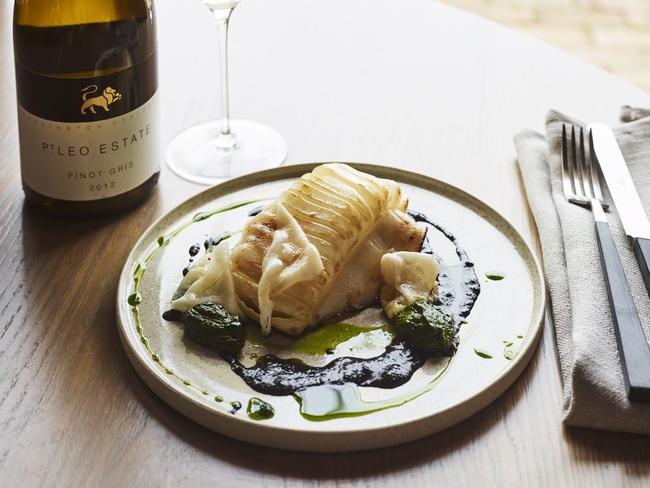
Their Boneo business, The Mushroom Forestry, grows exotic shiitake and pink, yellow and pearl oyster mushrooms as well as the rarer lion’s mane and reishi varieties, also known for their medicinal properties. All are grown in climate-controlled, light-filtered cool rooms, while some are propagated in special bags.
Pt Leo Estate is one of eight restaurants tapping into Sharpley’s 300kg weekly haul.
“The alternative for chefs is importing them so if you’ve got something at your back door, it’s so much easier for them,” Sharpley says. “We work directly. Often we’ll pick and harvest and it’ll be to Phil within an hour.
“A lot of the chefs talk about (paddock to plate) but down here they actually do it, and they end up with different things on their menu, which gives them an advantage with diners.”
Wood teams fish with smoked and pickled oyster mushrooms, is developing a dish for the shiitakes and will use lion’s mane at Laura.
Wood will showcase Peninsula produce over four courses with matched estate wines for “Sense of Place” at Pt Leo Estate (3649 Frankston-Flinders Rd, Merricks), March 19, $203. He is also a guest chef at “Dinner at our House” at MFWF’S House of Food and Wine Hotel (Hotel Lindrum, 26 Flinders St, City), March 16, $245. mfwf.com.au
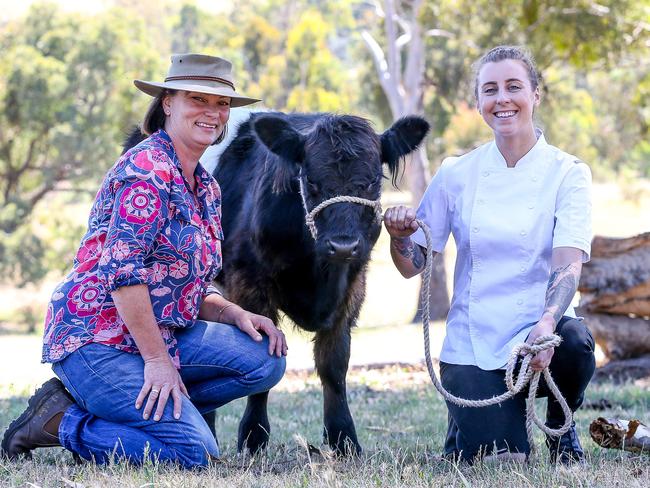
JO BARRETT & LIZETTE SNAITH
ON many a Saturday morning, Jo Barrett the home cook could be found lining up for Lizette Snaith’s prized beef at the Slow Food Farmers’ Market at Abbotsford Convent.
Now, Jo Barrett the Yarra Valley head chef has Snaith on speed dial, ordering whole beasts for her winery restaurant Oakridge, ranked No. 14 on the current delicious.100 list.
Lizette and husband Allen have been farming cattle since the ’80s.
Their Warialda Belted Galloway Beef is produced at their Clonbinane property, 55km north of Melbourne, as well as on agistments at Woodend, in the Yarra Valley and on the Mornington Peninsula.
Apart from cafe and restaurant menus, the rare-breed, grass-fed beef is available to the public as dry-aged cuts, smallgoods, pies, sausages and burgers at farmers’ markets from Collingwood to Castlemaine.
MELBOURNE’S BEST CHEFS YOU’VE NEVER HEARD OF
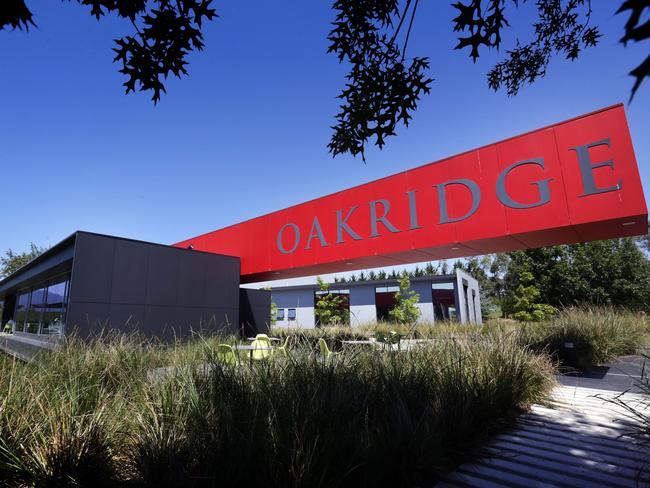
In keeping with the nose-to-tail philosophy, the striped hides of the belted galloways — known as “front-paddock cows” for their good looks — are also sold as bags and floor rugs.
Barrett and partner Matt Stone, co-head chef at Oakridge, are also fans of using the entire beast, which fits with their zero-waste kitchen and encourages creativity to use each cut — rump, scotch, sirloin, eye fillet — to maximum effect across ever-changing dishes.
“We use whole animals because it challenges us to use everything in creative ways through ageing, curing and different cooking techniques,” Barrett says. “Having the different cuts fit with us because we constantly change our menu.”
Barrett loves Warialda beef’s high quality and flavour, especially with dry ageing.
“It’s a small production so it’s consistent,” she says. “Lizette and Allen care about their cattle and that’s important to me.
“They work hard to take care of the cows and to produce a premium product. The animals aren’t stressed and they live a happy, long life. Each cow becomes a part of their family. I like their ethos.”
TOP FOOD TIPS BY MELBOURNE CHEFS
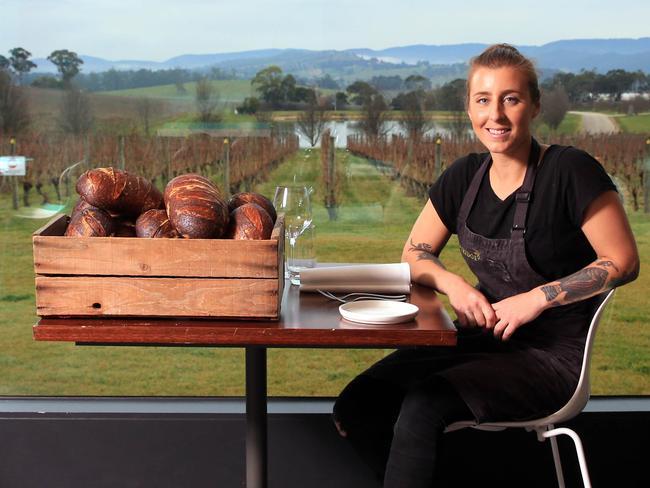
The Snaiths encourage chefs who use their beef to visit their farm to help build the relationship and give a better understanding of their practices.
“It’s beautiful and there’s so much space for the cows,” Barrett says.
“Having a relationship with suppliers is really important to me. There needs to be an understanding on both sides. As a chef, I need to know that I can’t have everything all the time or all in one size. That’s not nature.
“Farming fruit and veg or raising animals is extremely hard. If it doesn’t rain for an extended amount of time, the grass the cows are eating is going to change or dry up, the cows might need to be moved or feed changed and that, in turn, will change them.
“I work with producers who understand what we are trying to achieve with our food. I can imagine after growing food, watching a chef show it the same respect and produce a delicious dish would be very satisfying.”
Barrett and Stone will cook at the regional World’s Longest Lunch at Oakridge Wines (864 Maroondah Highway, Coldstream), March 16, $168. They are also chefs-in-residence at MFWF’S House of Food and Wine Hotel (Hotel Lindrum, 26 Flinders St, city), hosting “Dinner at our House” events with guest chefs. mfwf.com.au
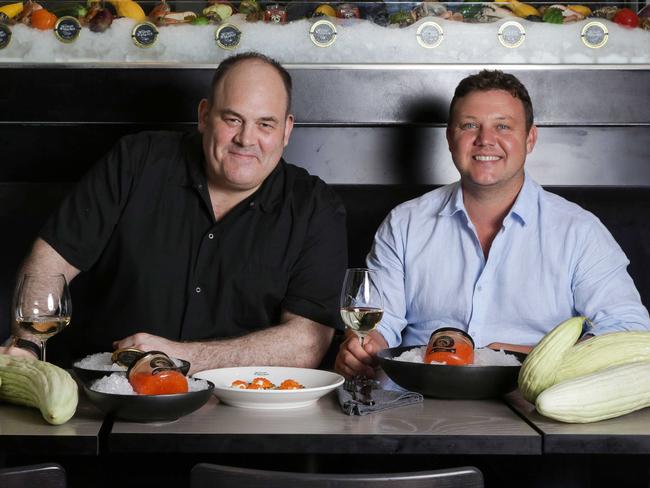
PAUL WILSON & NICK GORMAN
THE good things in life are closer than you might think. Like the luxury caviar produced in the Yarra Valley and loved by chefs the country over.
Paul Wilson has long been a cheerleader for Yarra Valley Caviar, these days serving it with crepes and cultured vodka cream at his popular Prahran Market bistro, cafe and bar Wilson & Market. The brand came to his attention about a decade ago as a state judge for the annual delicious. produce awards, celebrating Australia’s top producers.
“It’s a local, organic and unadulterated product and diners love the purity of the flavour, the texture and the subtle marine flavours,” Wilson says.
Yarra Valley Caviar national business development manager Nick Gorman says people connect with the product because, unlike imported caviar, fish aren’t killed to make it.
“We’re milking the fish, taking eggs and putting the fish back,” he says. “Plus the quality of the roe is awesome compared to the imported product, which is the by-product of a dead fish.”
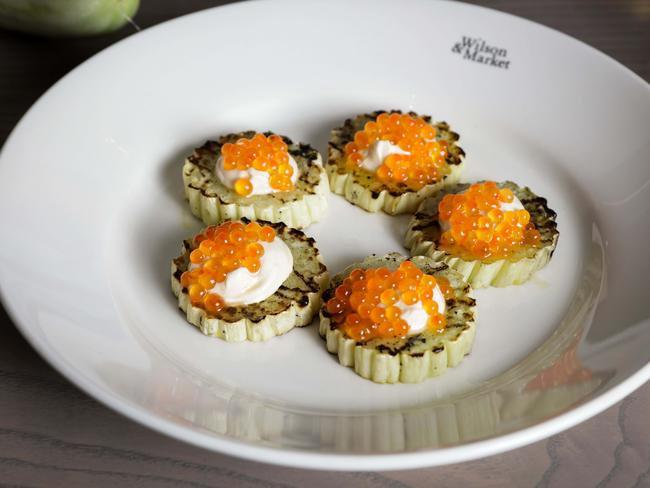
At the base of the Rubicon River in the Yarra Valley, the freshwater farm is home to about 25,000 salmon producing up to 15 tonnes of caviar a year that’s harvested during a three to four-week season each May. Under natural sedation with clove oil, the fish are milked by hand before being placed back in their ponds to spawn again the following year.
Gorman says about 90 per cent of the caviar ends up in dishes in restaurants and cafes Australia wide, while the rest is packaged for retail sale or exported to restaurants in the Maldives, Singapore and Hong Kong.
In the past few years, the company has invited chefs, front-of-house staff and caterers to the farm to get hands-on during harvesting.
“We get them to milk their own fish to see what it’s all about and really get a connection with the product that they’re using,” Gorman says.
“It’s also great for us to get to know everyone. We’ll bring them by bus from Melbourne and have a chef cook up some lunch for everyone.”
British-born Wilson has made several visits, and loves it. He encourages his team to do the same.
“It’s so peaceful,” he says. “The sound of running water makes me calm and happy and reminds me of home in the UK and my youth fishing in the idyllic British countryside.”
The homegrown, ethically made caviar sums up Wilson’s relationship with Melbourne.
“I fell in love with Melbourne because of its emotions towards good food,” he says.
“The opportunity to work with local farms and small-scale suppliers allows me to contribute to the food culture while making a financial contribution to the economy and the industry I’m so passionate about.”
Wilson will host “The Great Seafood Dinner” with chablis and a debate on what is Australia’s greatest seafood at Wilson & Market (163-185 Commercial Rd, South Yarra), March 18, $300. mfwf.com.au


